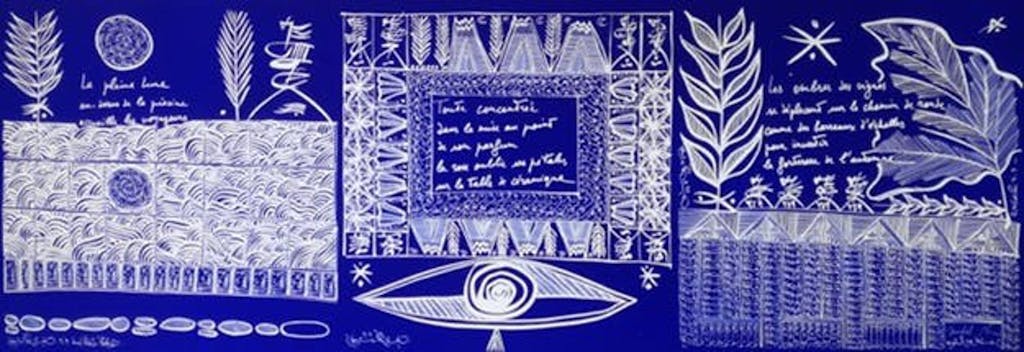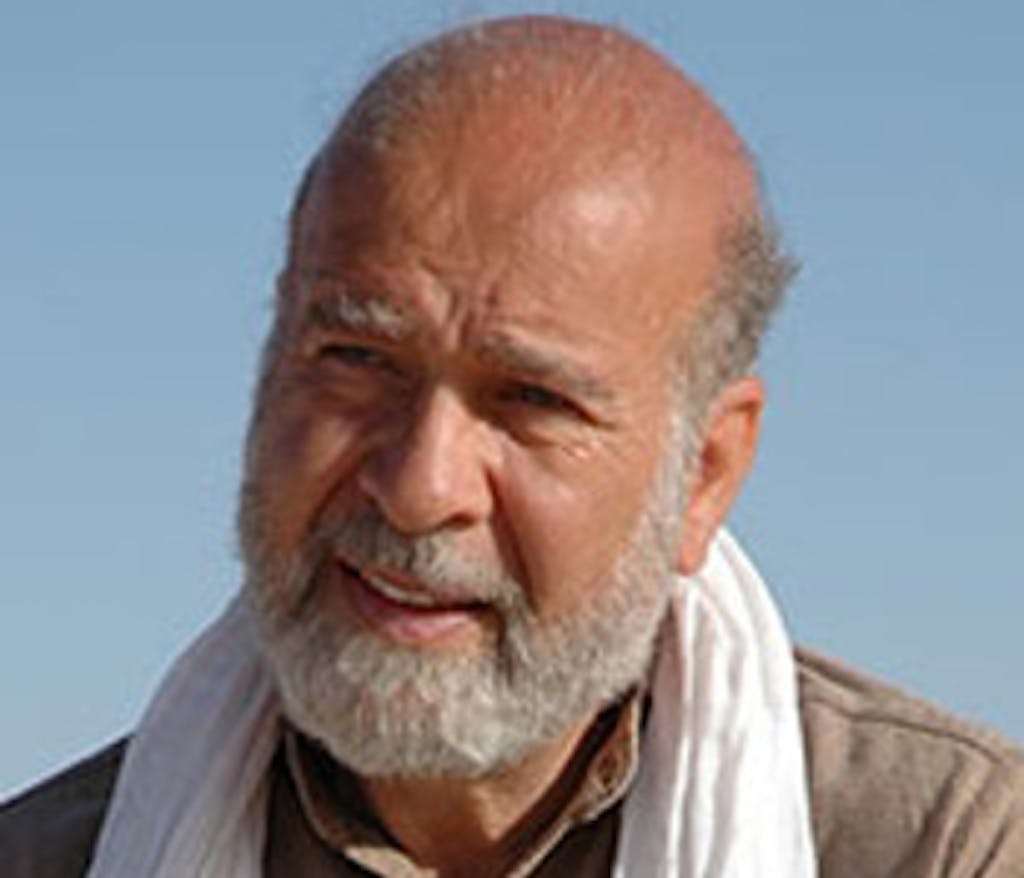Rachid Koraichi, Making His Own Language,New York Times, 31.03.2016.
Born in 1947 in Aïn Beida, Algeria, Rachid Koraichi lives and works in Paris.
The work of Rachid Koraïchi draws its strength from the richness of the letter. Coming from a Sufi religious family, he practiced the sign from a young age. He attends the Koranic school where he learns to reproduce the suras of the sacred book. Raised in religion, he decides at sixteen to give up the practice. But the gesture of the writing remains engraved in his mind. After training at the School of Fine Arts in Algiers from 1967 to 1971, he moved to Paris and took courses at the School of Decorative Arts from 1973 to 1975, then at Fine Arts until 1977 .
Although he has exhibited since the 1970s, it is especially with the new outlook on contemporary African art that he enjoys a major place on the international scene. The exhibition “African Encounters” in which he participated in 1994 is only the beginning of a series of events that mark this turning point. In 1990, the George Pompidou Center presented “Salomé”, the fruit of a collaboration between the writer Michel Butor and Koraïchi. The same year, he participated in the tribute to René Char (1907-1988) at the Palais des Papes in Avignon.
He created for Mohammed Dib’s Child Jazz a collection of poetry rewarded with the Mallarmé Prize in 1998 and collaborated with the Palestinian poet Mahmoud Darwish for “The Engraved Hymn, Poem of Beirut”.
He dedicated his installation “Chemin de Roses” to the religious scholar and poet al-Rûmî, work of several years. This installation, presented in London in 2003 (October Gallery), brings together metallic sculptures, embroidery of golden thread on blue silk and ceramic basins filled with a background of water sprinkled with rose petals.
If his alphabet finds its origins in a register which extends from the Arab-Berber world to the Far East, it is above all invention of the artist. To the point that the letter may very well have no other meaning than that suggested by its form.




